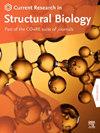Pathogenic single nucleotide polymorphisms in RhoA gene: Insights into structural and functional impacts on RhoA-PLD1 interaction through molecular dynamics simulation
IF 2.7
Q3 BIOCHEMISTRY & MOLECULAR BIOLOGY
引用次数: 0
Abstract
Molecular switches serve as key regulators of biological systems by acting as one of the crucial driving forces in the initiation of signal transduction pathway cascades. The Ras homolog gene family member A (RhoA) is one of the molecular switches that binds with GTP in order to cycle between an active GTP-bound state and an inactive GDP-bound state. Any aberrance in control over this circuit, particularly due to any perturbation in switching, leads to the development of different pathogenicity. Consequently, the single nucleotide polymorphisms (SNPs) within the RhoA gene, especially deleterious genetic variations, are crucial to study to forecast structural alteration and their functional impacts in light of disease onset. In this comprehensive study, we employed a range of computational tools to screen the deleterious SNPs of RhoA from 207 nonsynonymous SNPs (nsSNPs). By utilizing 7 distinct tools for further analysis, 8 common deleterious SNPs were sorted, among them 5 nsSNPs (V9G, G17E, E40K, A61T, F171L) were found to be in the highly conserved regions, with E40K and A61T at G2 and G3 motif of the GTP-binding domain respectively, indicating potential perturbation in GTP/GDP binding ability of the protein. RhoA-GDP complex interacts with the enzyme phospholipase, specifically PLD1, to regulate different cellular activities. PLD1 is also a crucial regulator of thrombosis and cancer. In that line of focus, our initial structural analysis of Y66H, A61T, G17E, I86N, and I151T mutations of RhoA revealed remarkable decreased hydrophobicity from which we further filtered out G17E and I86N which may have potential impact on the RhoA-GDP-PLD1 complex. Intriguingly, the comparative 250 ns (ns) molecular dynamics (MD) simulation of these two mutated complexes revealed overall structural instability and altered interaction patterns. Therefore, further investigation into these deleterious mutations with in vitro and in vivo studies could lead to the identification of potential biomarkers in terms of different pathogenesis and could also be utilized in personalized therapeutic targets in the long run.
RhoA基因致病性单核苷酸多态性:通过分子动力学模拟了解RhoA- pld1相互作用的结构和功能影响。
分子开关是生物系统的关键调控因子,是信号转导通路级联启动的关键驱动力之一。Ras同源基因家族成员A (RhoA)是与GTP结合的分子开关之一,以便在活性GTP结合状态和非活性gdp结合状态之间循环。对该回路的任何控制异常,特别是由于开关的任何扰动,都会导致不同致病性的发展。因此,RhoA基因内的单核苷酸多态性(SNPs),特别是有害的遗传变异,对于研究预测结构变化及其在疾病发病中的功能影响至关重要。在这项综合研究中,我们使用了一系列计算工具从207个非同义snp (nssnp)中筛选RhoA的有害snp。通过使用7种不同的工具进行进一步分析,筛选出8个常见的有害snp,其中5个nssnp (V9G、G17E、E40K、A61T、F171L)位于高度保守区域,E40K和A61T分别位于GTP结合域的G2和G3基序,表明该蛋白的GTP/GDP结合能力可能受到扰动。RhoA-GDP复合物与磷脂酶,特别是PLD1相互作用,调节不同的细胞活动。PLD1也是血栓形成和癌症的重要调节因子。在这条重点线上,我们对RhoA的Y66H、A61T、G17E、I86N和I151T突变的初步结构分析显示,RhoA的疏水性显著降低,我们进一步过滤出可能对RhoA- gdp - pld1复合物有潜在影响的G17E和I86N。有趣的是,这两种突变复合物的250 ns (ns)分子动力学(MD)模拟显示了整体结构的不稳定性和相互作用模式的改变。因此,通过体外和体内研究对这些有害突变进行进一步研究,可以根据不同的发病机制识别潜在的生物标志物,并从长远来看可以用于个性化的治疗靶点。
本文章由计算机程序翻译,如有差异,请以英文原文为准。
求助全文
约1分钟内获得全文
求助全文

 求助内容:
求助内容: 应助结果提醒方式:
应助结果提醒方式:


